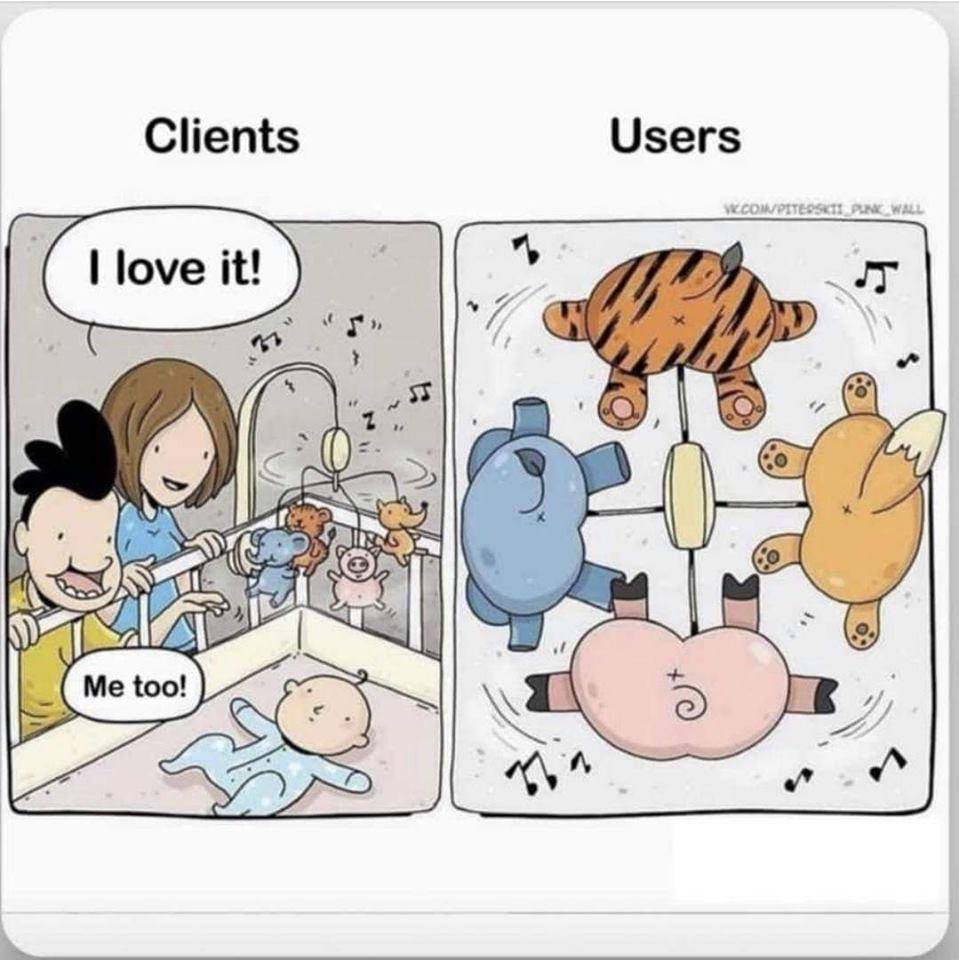Comic Strips
Comic Strips is a community for those who love comic stories.
The rules are simple:
- The post can be a single image, an image gallery, or a link to a specific comic hosted on another site (the author's website, for instance).
- The comic must be a complete story.
- If it is an external link, it must be to a specific story, not to the root of the site.
- You may post comics from others or your own.
- If you are posting a comic of your own, a maximum of one per week is allowed (I know, your comics are great, but this rule helps avoid spam).
- The comic can be in any language, but if it's not in English, OP must include an English translation in the post's 'body' field (note: you don't need to select a specific language when posting a comic).
- Politeness.
- Adult content is not allowed. This community aims to be fun for people of all ages.
Web of links
- !linuxmemes@lemmy.world: "I use Arch btw"
- !memes@lemmy.world: memes (you don't say!)
Explains my urge to eat my wife's ass
Also explains my urge to eat this man's wife's ass.
Hey get in line buddy
My wife will be so excited to see this post, she might even use the bidet
There's shorter queue here for his mom
She dead, so very short line. Also cremated, so it's quick!
Yeah, but I don't want to miss out on this human centipede forming
Try not to eat any ass on your way through the parking lot!
In a row?!?
Ass men aren't born; they're made.

I was gonna say, clients aren't the only ones.
Feels like a lot of developers and especially UX designers have a bad habit of disappearing up their own asshole nowadays.
It's a reason why sometimes an open source project manages to be way better than a comparatively well resourced commercial offering. When the developers are the users, they will get the nuance of things.
Works well for a lot of "power user" software where the users are either developers, or at least similar mindset as a developer. Sometimes open source doesn't deal too well with making things simple without power user features that casual users may find confusing or distracting.
In my experience developing In-House custom software it's more "Managers" and "End-users": basically the requirements for the software that's developed are defined by the manager overseeing an area and hence based on their point of view of the business process they oversee, which is often not at all the same point of view as the people working in that process.
I've seen again and again software being made exactly to the spec provided by team/area management and then turning out to have lots of problems for the actual users to use.
In my experience the best results come from having the developers talk directly with the end-users, even if the language the devs tend to speak and their preconceptions at first don't match those of the end-users.
The software isn't made for the user, because the user isn't the one paying for it.
The point is the client presumably paid for it for their users, who are their customers, but they have no idea what those users want.
Well, that's the thing, it's often the case that whilst the client is supposedly doing it for their users, in practice it's not and is doing it for other reasons.
Mind you, I think that is more common when the software is being developed for a client which is basically a Manager in the same company as the users of the software (for example in In-house Development or Consultancy work developing a solution for a company) were in the absence of the very clear pressure vector which is the customers not buying the product (internal end-users are almost never given a choice to use or not that software, though they can at times informally boycot software they think hinders their work and get the project killed) things are often designed for the Manager rather than for the Users.
(Note that this is not necessarily done in a knowing purposeful way: it's just that when it's some external manager providing the requirements to the developers for the software being made for the area that managers overseens - though sometimes it's even more indirect - things tend to be seen from the perspective of said manager not the end-users, hence designed to match how that manager sees things and thinks things work, which is often different from how the actual users see things. This cartoon perfectly illustrates that IMHO - it looks fine for the "manager" whilst looking quite different for the "end-user").
Even is B2C you see that: notice the proliferation of things like Microtransactions in Games, which are hardly the kind of thing gamers - who are the end-users of games - wanted to have but which definitelly the management of the big Publishers wanted.
More examples:
- software for doing stuff management wants done that is some tedious crap that the employees fundamentally hate dealing with. See workday.
- Streaming software that has the providers agenda and presents to a user browsing the stuff the provider wants then to see. Also features like aggregating their video content from multiple providers or at least helping then find the company that has the rights for content they do not have would be loved by users but absolutely a nono for the provider.
- Software that meets a check box with cheap company wide licensing so they can check a box to say employee requirements are met, without employee feedback.
- Software that wants to ensure they have relatively predictable recurring revenue forever. So they take their software and lock it to being "cloud only/subscription only".
oh, I figured the users were the client's employees.
Piterskii Punk (Russian: Питерский панк) posts drawings in VK social network. Of course, in Russian
https://vk.com/piterskii_punk_wall
That's in response to OP's text
P.S. Oh, wait, it's in the comic, lol. Looks like we both are not quite attentive :D
😂

Old but gold.
